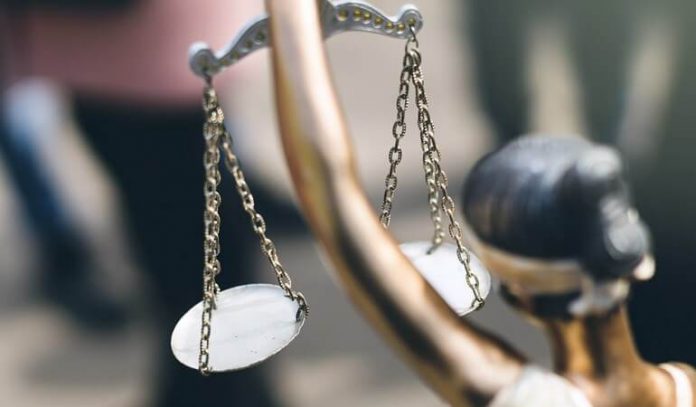This article is written by Gyaaneshwar Joshi, from the Faculty of Law, Jamia Millia Islamia, New Delhi. In this article, the author discusses the lack of opportunities given to women in the judiciary.
Table of Contents
Introduction
Skewed gender disparities have always been present in the judiciary around the world. Decades ago, women in several countries were debarred from entering the legal profession. The gender-related issues were challenged in many infamous cases such as Bebb v. Law Society (1913) and Bradwell v. Illinois (1873), where the foreign courts discussed the principle of whether women are suitable for joining the legal profession or not.
The Supreme Court of Canada in the case of Edwards v. A.G. of Canada (1829), i.e. in the ‘persons case’, allowed women for the first time to sit in the Senate, and overruled its previous judgment which held women as “unqualified persons” under Canadian Law and ineligible to become a member of the Senate.
In Re: Regina Guha v. Unknown (1916) was the first ‘persons case’ in India’s legal history. In this case, Regina Guha after completing her Bachelor in Laws in 1915 applied to enrol as a lawyer, but her application was rejected because women were not permitted to register under the rules of the Legal Practitioners Act, 1879. After fighting a prolonged legal battle against the oppressive provisions under this Act, the Legal Practitioners (Women) Act, 1923 was passed which added a new clause that “no woman shall, by reason only of her sex, be disqualified from being admitted or enrolled as a legal practitioner or from practicing as such” and this amendment paved the way for women to get themselves enrolled as ‘Advocates’ from the year 1923.
Lack of female representation in the judiciary
The Supreme Court (Number of Judges) Amendment Act, 2019, increased the number of judges in the Supreme Court from 30 to 33 (except CJI). However, looking at the present strength of 29 judges in the Apex Court, the female number of judges, after the retirement of Justice Indu Malhotra on 13 March 2021, is only ‘one’. Justice Indira Banerjee is currently the sole female judge who will be retiring on 23 September 2022.
In the Supreme Court’s history, from 1950 to 2020, there have been 247 judges appointed, out of which only 8 are women, i.e. a mere 3.2% of total appointments. During the first thirty-nine years of the Supreme Court, no female judges served on the Supreme Court bench. Whereas in the history of the Apex Court between 1950-2000, only two women were appointed, i.e. Justice Fathima Beevi and Justice Sujata Manohar. Justice Fathima Beevi became the first female judge to be elevated to the Supreme Court in 1989. It was after 2000, the number of appointments improved, and six female judges served the bench. The High Courts of Calcutta and Bombay produced the maximum number of female Supreme Court judges.
The share of female judges appointed from the Bar is relatively low as compared to the bench. Out of the eight Supreme Court judges, Justice Indu Malhotra is the only woman judge to be elevated directly from the Bar. She was appointed in April 2018, fifty-four years after the first appointee in this category.
While looking at the number of female judges appointed in various High Courts of India, the total strength of sanctioned judges is 1079, where 426 seats are vacant and, out of 653 sitting judges, only 78 are women. Madras High Court (13) has the highest strength of female judges, followed by Punjab & Haryana High Court (7), Delhi and Karnataka High Courts (5), Gujarat, and Kerala (5) High Courts. Presently, there are no women judges in five High Courts, namely, Patna, Manipur, Tripura, Meghalaya, and Uttarakhand. Justice Hima Kohli is the only female Chief Justice currently serving in the High Court of Telangana. She will be retiring on 1 September 2021.
Also, the estimated strength of females serving in the lower Judiciary is abysmally low, with around 4409 women judges serving out of 15,806 judges, i.e. 28% of the total current strength.
List of Women Justices in the Supreme Court
|
Judge’s Name |
Year of Appointment |
Bar/Bench (High Court) |
|
|
1 |
Justice M.F. Beevi |
1989 |
Kerala |
|
2 |
Justice Sujata Manohar |
1994 |
Bombay |
|
3 |
Justice Ruma Pal |
2000 |
Calcutta |
|
4 |
Justice Gyan S. Mishra |
2010 |
Patna |
|
5 |
Justice Ranjana P. Desai |
2011 |
Bombay |
|
6 |
Justice R. Bhanumati |
2014 |
Madras |
|
7 |
Justice Indu Malhotra |
2018 |
Bar |
|
8 |
Justice Indira Banerjee |
2018 |
Calcutta |
Patriarchy in the Indian legal system
The concern over patriarchy was fueled in April 2021, after the Supreme Court Women Lawyers Association moved an application before the former CJI Sharad Arvind Bobde. This application was filed in the Supreme Court seeking directions to consider meritorious women lawyers practicing in the Supreme Court and the High Courts for appointment as Judges in the High Courts, especially in those High Courts where the representation of women is relatively low. The application urged for the appointment of more women judges in the High Courts and the Supreme Court.
The former Justice Indu Malhotra, in her farewell speech also raised the concern over inadequate representation of women in the higher judiciary. She said that “women should not be taken as a mere token” in which she pointed out that women judges should not be appointed only for the sake of having female representation in the Court, but to elevate gender sensitivity and equality in the justice system.
Female judges and their unachieved dreams
Presently, many women candidates deserve to be appointed as a Judge, but the main problem lies with the male-dominant collegium structure of the Supreme Court. Collegium is a system for appointment and transfer of judges in the Supreme Court and the various High Courts. The body comprises the Chief Justice of India and 4 other senior-most judges of the Supreme Court.
The Supreme Court collegium has a more prominent role in elevating judges to the Supreme Court and various High Courts, but this body has always been considered as a male-dominated body and is notorious for its lack of showing liberal and generous approach in terms of judicial appointments of women in higher Judiciary. Even though the executive has been given the power to appoint judges to the Supreme Court under Article 124(2) of the Constitution, it has a minimal role in the appointment because in the case when the name gets rejected by the executive for an appointment but reiterated by the collegium, the executive is bound to appoint that person as a judge.
Former CJI Sharad Arvind Bobde took his stand on this issue and stated that many women advocates had been offered judgeship in the past, but all have declined to hold the office, citing their domestic responsibilities. Justice Sanjay Kishan Kaul, who was part of the same bench hearing the plea filed by the Supreme Court Women Lawyers Association, reiterated CJI’s statement and corroborated that many women have declined judgeship offers. The bench further anticipated that the time is near to come when India has its first female Chief Justice.
Looking at the present status of appointments being done for the post of the Chief Justice, it seems to be very far for India to have its first female Chief Justice. The seniority level in the Supreme Court judges, which plays a significant role in elevating any judge to the post of the CJI, shows that there are no chances of having any women candidates until 2027. According to seniority, incumbent CJI, R.V. Ramana, will serve the office till 26 August 2022. Justice Uday Umesh Lalit will likely succeed him by 8 November 2022, followed by Justice D.Y. Chandrachud up to 10 November 2024, Justice Sanjiv Khanna up to 13 May 2025, Justice B.R. Gawai up to 23 November 2025, and Justice Surya Kant up to 9 February 2027. Therefore, the chances of having a woman as the CJI is negligible until 2027.
On 18 August 2021, the Supreme Court collegium led by Chief Justice N.V. Ramana has shortlisted the names of nine judges for the elevation to the Supreme Court, which includes the name of three woman judges- Justice B.V. Nagarathna (Karnataka High Court), Justice Hima Kohli (Telangana High Court), and Justice Bela Trivedi (Gujarat High Court). Among these three judges, the name of Justice B.V. Nagarathna is at the forefront to become the first woman Chief Justice of India in 2027.
It is believed that former Justice Ruma Pal could have been the first woman Chief Justice of India in 2005. In 2000, three judges were appointed to the Supreme Court in which Justice Ruma Pal and Justice Yogesh Sabharwal having the same seniority, were confirmed to take oath on 29 January 2000. Due to the occasion of the Golden jubilee of the Supreme Court, the swearing-in ceremony was postponed to 26 January 2000. Justice Ruma Pal did not receive the notice in time, which resulted in Justice Yogesh Sabharwal being sworn in first and becoming the senior justice. On 1 November 2005, Justice Yogesh Kumar Sabharwal became the 36th Chief justice of India.
Why do we need more women in the judiciary?
Gender sensitivity has always been a severe issue in the Indian judiciary. Attorney General K.K. Venugopal once suggested to the Supreme Court that “Judges who studied from old schools and are patriarchal, need to be sensitized”. He further stated that improving the representation of women in the judiciary could go a long way towards a more balanced and empathetic approach in cases related to sexual violence.
The issue of gender sensitization has been raised many times, especially in the cases where male judges failed to show empathy for the female victims. One such matter happened in Madhya Pradesh High Court when the Judge agreed to grant bail to a man charged with outraging the modesty of a woman, on the condition that he visit the complainant’s house and request her to tie a rakhi band on his wrist. Similarly, the former CJI Sharad Arvind Bobde once created a controversy by asking a 23-year-old government servant to marry a woman who accused him of rape.
In the judgment of Delhi v. Pankaj Chaudhary and Others (2018), the all-women bench of the Supreme Court, comprising Justice Indira Banerjee and Justice R. Bhanumati, has shown the difference that only women judges can make while dealing with a rape case, as opposed to male judges who seem unable to overcome their stereotypical views on rape. In this judgment, the Supreme Court bench instructed to restore the Trial Court’s conviction and sentence against the four accused who were charged with the offence of rape. Earlier in this matter, the Delhi High Court delivered the judgment in favour of the accused just because the rape survivor at the time of rape was under police custody for prostitution. The Apex Court held that even if a woman is ‘immoral’ or of ‘easy virtue’ it does not mean that it will give anyone the right to rape or exploit her. The Court stated that even if a woman is of ‘loose immoral character’, she is equally entitled to protection under the law.
The judiciary will not be trusted if it is viewed as a bastion of elitism, exclusivity and privilege. Therefore, the presence of women is essential for the legitimacy of the judiciary. The past status of women in the Judiciary can be observed from the case of Rupan Deol Bajaj v. KPS Gill (1995), when the complainant, Ms Rupan Bajaj, urged the Supreme Court to appoint a female judge for her case. However, there was no incumbent female judge present in the Supreme Court at that time.
Notable women who have served the Indian judiciary
Several women lawyers reached prominent positions in the Judiciary. They marked their names in some of the prominent judgments that can never be forgotten in the history of the Indian Judiciary:
Cornelia Sorabji
She was the first female advocate in India. She was also the first female graduate from Bombay University and the first woman to study law at the prestigious Oxford University. During the 20 years of her service, it is estimated that Sorabji helped over 600 women and orphans fight legal battles; sometimes with no charge.
Justice Anna Chandy
She was the first woman judge of the High Court and served for over 8 years as a judge in Kerala High Court. She was often described as a first-generation feminist, having fought for women’s right to work and demanded a quota for women in government jobs. Apart from being India’s first women judge, she was also one of the first female judges in the British Empire.
Justice Fathima Beevi
She was the first woman Supreme Court judge. In 1950, she became the first woman to top the Bar Council of India’s exam. After she retired from the Supreme Court, she was appointed as the Governor of Tamil Nadu in 1997.
Justice Leila Seth
She served as the first woman judge on the Delhi High Court and became the first woman Chief Justice of a state High Court for Himachal Pradesh. She was also responsible for the amendments to the Hindu Succession Act, 1956 which gave daughters equal rights in the joint family property.
Justice Indu Malhotra
She was the first woman judge elevated directly from the Bar and became the 7th woman judge in the Supreme Court’s history. Justice Indu Malhotra, in her three-years tenure as a judge, delivered a series of remarkable judgments, ranging over varied schemes of law such as striking down Section 497 of the IPC (Adultery) and the decriminalisation of homosexuality under Section 377 of IPC.
Justice Indira Banerjee
She is the 8th and only female judge of the Supreme Court at present. She is the former Chief Justice of Madras High Court, the second woman to hold the position in India before being elevated as a judge of the Supreme Court. She was enrolled as an advocate on 5 July 1985 and practiced before the Calcutta High Court. She served as a judge in significant rulings such as Sushila Aggarwal v. State (NCT of Delhi) (2020), which unanimously ruled that the protection granted to a person under Section 438 of the Code of Criminal Procedure, 1973 should not invariably be limited to a fixed period, but it should insure in favour of the accused without any restriction on time.
Conclusion
In India, women have occupied higher offices like President, Prime Minister, and Speaker but are still left to represent the higher judicial posts like CJI, Attorney General, and Solicitor General. The shortage of women judges in the higher judiciary has been raised on several occasions in the Parliament and debated by notable panels in various legal conferences.
References
- https://www.indiatoday.in/india/story/supreme-court-sa-bobde-woman-chief-justice-of-india-1791553-2021-04-16
- https://www.livelaw.in/top-stories/consider-meritorious-women-lawyers-as-high-court-judges-supreme-court-women-lawyers-association-moves-sc-172197?infinitescroll=1
LawSikho has created a telegram group for exchanging legal knowledge, referrals, and various opportunities. You can click on this link and join:
 Serato DJ Crack 2025Serato DJ PRO Crack
Serato DJ Crack 2025Serato DJ PRO Crack











 Allow notifications
Allow notifications



